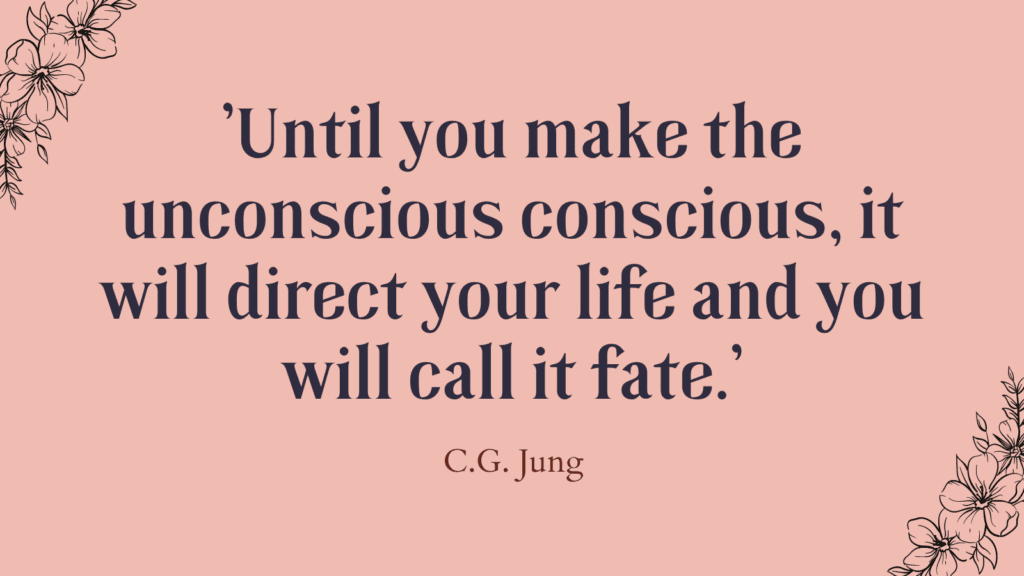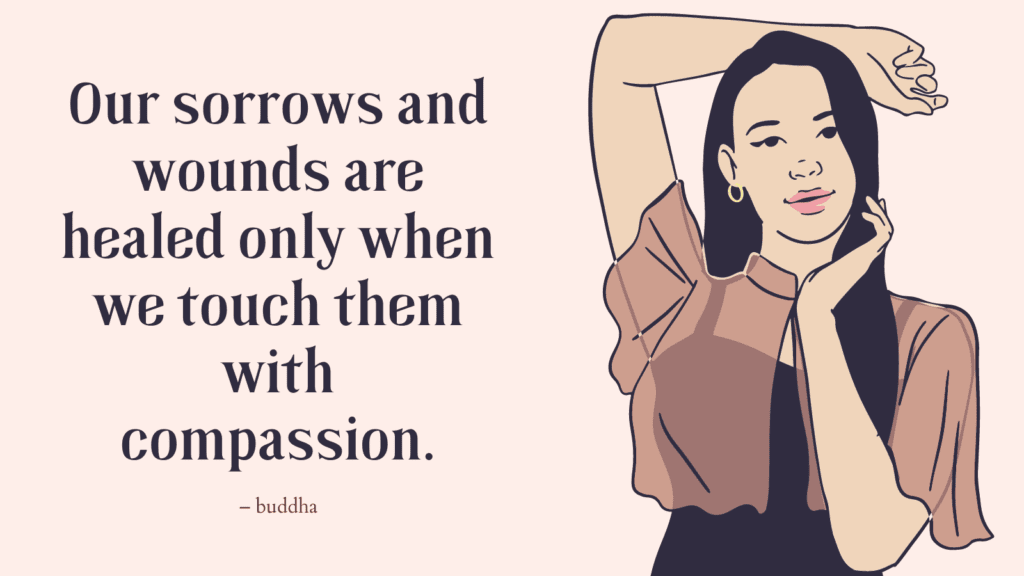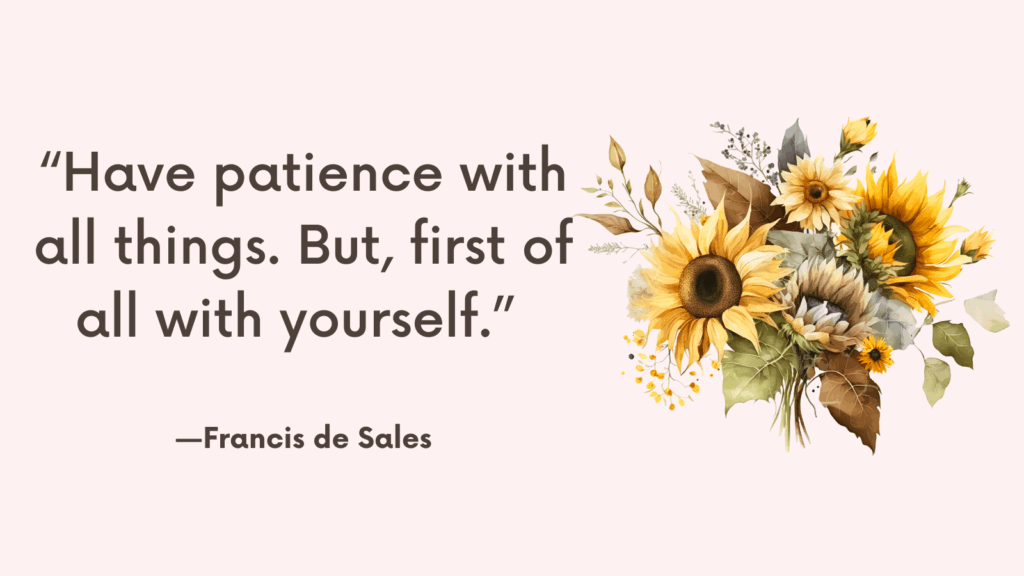Today, you’ll learn all about inner teenager healing using these powerful exercises meant to heal your inner teenager and inner child and help you stop self-sabotage behaviors.
- Inner Child- Inner Teenager – Inner Adult
- Who Is The Inner Teenager?
- Signs Your Inner Teenager Is In Control
- How Is The Inner Teenager Self-Sabotaging?
- 11 Inner Teenager’s Self-Sabotaging Behaviors
- Healing Inner Teenager: How to Stop Self-Sabotage?
- Inner Teenager Healing Worksheets PDF
- 14 Exercises For Inner Teenager Healing
- What Does A Secure Inner Teenager Look Like?
- Pro Tip. Work With a Therapist
- FAQ
- Inner Child Healing Exercises PDF
Inner Child- Inner Teenager – Inner Adult
Many psychologists have divided the psyche into two main parts: the inner child (the unconscious level that represents our emotions) and the inner adult (the conscious level that represents our logic). (*)
This separation is important to bring past wounds and negative beliefs into consciousness and heal them.
Inner Child vs Inner Teenager
While the inner child only represents our core needs and emotions, the inner teenager is the part of your personality responsible for acting on those needs and emotions.
Who Is The Inner Teenager?
The inner teenager is typically immature, rebellious, moody, awkward, reacting without thinking, etc.
Without the interference of the inner adult in choice-making, we use the drive of the inner teenager in a self-defeating way.
The inner teenager is responsible for attracting the wrong people, maxing out your credit card, procrastinating, emotional eating, addictions, and other self-sabotaging behaviors.
Why Separate The Inner Teenager from the inner child?
Your inner child is your emotional core, the vulnerable, innocent, and often needy part of you. It needs to be heard and tended to.
The wounded inner child encompasses the negative feelings and beliefs related to childhood experiences. (*)
In contrast, the inner teenager is the restless, self-centered, and driven part of your personality. It’s old enough to have a willful mind of its own but not old enough to consider the consequences or the rights and feelings of others, so it acts out instead.
But the inner child doesn’t want to become heartbroken, broke, or fat. Your inner child’s needs are more basic — to feel special, loved, and fulfilled.
The goal is to learn to love ourselves unconditionally and meet our basic needs.
How is it possible to love your Inner Child unconditionally and hate its feelings for sabotaging you?
Without separating the inner child’s needs from the inner teenager’s clumsy attempts to meet them, we end up blaming our behaviors on our feelings— and in turn the inner child.
By attributing the self-sabotaging behavior to something outside of the Self— namely, the inner teenager, you can direct your fix-it energy toward the inner teenager and spare the inner child from the toxic subtext.
Related: Were You Undermothered? 9 Ways to Re-Mother Yourself and Heal Your Inner Child
Signs Your Inner Teenager Is In Control
Do you struggle with any of these self-sabotaging behaviors?
- Overspending
- Addictions
- Binge eating
- Overreacting when you feel even slightly rejected, dismissed, or abandoned.
- Playing the victim
- Playing the martyr
- Holding onto resentments
- Blaming others
- Procrastination and using distractions
- Using defense mechanisms, like projection, denial, narcissism, perfectionism, people-pleasing, control, avoidance and withdrawal, etc.
If so, your inner teenager might be at the wheel, preventing your from taking mature, empowered action.
Such behaviors are usually triggered by intense emotions and aim to bring relief. However, behaviors such as avoidance, while might bring momentary relief, it does more harm than good in the end.
The more you avoid, the more your negative beliefs reinforce themselves and the more your fears grow.

How Is The Inner Teenager Self-Sabotaging?
We go to great lengths to suppress the wounded inner child or at least behave in ways that prevent others from realizing how inadequate we truly feel.
As a result, the inner teenager develops so-called self-protection strategies, or defense mechanisms – unconscious psychological strategies that aim to shield us from our wounded inner child’s negative feelings and thoughts.
These behaviors are usually the result of injury to any number of our basic psychological needs, such as need for connection, autonomy, security, pleasure, self-enhancement.
For example, if an individual believes that “I’m inadequate,” they’ll unknowingly do whatever they can to:
(1) invalidate this belief through defense mechanism strategies, such as perfectionism or,
(2) confirm it by repeatedly selecting incompatible partners, for example, leading failed relationships, or behaving so erratically that they become unbearable to be with, or procrastinating in their work.
The following are some common self-protection strategies the inner teenager uses to self-sabotage:
It’s important to keep in mind that self-protection strategies serve a purpose: they allow us to function more effectively. The problem is when these strategies fundamentally distort our perceptions and alter our behaviors in a way that’s misaligned with our true desires and moral values.
11 Inner Teenager’s Self-Sabotaging Behaviors
1. Repressing Reality
The ability to repress unpleasant events is one healthy and valuable self-protection strategy. It can be paralyzing to be constantly conscious of all the horrific things happening around us.
This is why people who had a happy childhood can easily recall those years, whereas people with a troubled childhood will find it more difficult to recall their youth.
However, as we grow older and become more capable of facing our problems, repressing things we don’t want to feel or acknowledge can become problematic.
When you repress your problems, you are unable to work on them. And repressing them for too long, can lead to an accumulation of problems and feelings of exhaustion or total burnout.
2. Projection
Projection means perceiving other people through the lens of our own needs and feelings.
For example, if you feel inferior, there’s a good chance you’ll project dominance onto other people.
We might also project the experiences we had with our parents onto our romantic partner. For example, if our father was overly controlling, we might feel easily controlled by our partner, unconsciously assuming they’ll be like Dad.
Projection can be hard to detect because our perception provides the basis for every other mental function: thinking and feeling. It’s difficult to detect distortions in our perception without self-reflecting on past incidents.
It is much easier to detect distortion when self-protection strategies manifest on the level of behavior or action.
3. Feeling Like The Victim
Feeling like a victim is another self-protection strategy people use to shield themselves from painful self-awareness and taking their own responsibility.
It’s a way to avert feeling of guilt and shame away from them and project them onto a scapegoat.
While nobody is immune to distorted perception and projection, people with narcissistic personality disorder can be downright aggressive in resisting self-awareness. Their self-esteem can be too fragile for an admission of their own guilt or reflecting upon their own role in a situation.
Related: How To Stop Feeling Sorry For Yourself? 10 Powerful Ways To Get Out Of Self-Pity
4. Perfectionism and Yearning For Recognition and Approval
People with high perfectionistic tendencies, typically hold beliefs like “I’m not allowed to make mistakes,” “I’m inadequate,” “I’m worthless.”
They live their lives on the defensive, trying so hard to cover any imperfections and leave no open targets for criticism.
Toxic perfectionism leads to overexertion, pushing people beyond their limits. Accomplishments may provide temporary relief, but the wounded child remains unimpressed, adamant about its inadequacy.
This is why perfectionists, despite their accomplishments, are never truly happy with themselves and might even often attribute their success to luck or feel like imposters.
People employing perfectionism as a self-protection strategy are trying incredibly hard to gain recognition and external approval.
They may go as far as choosing their hobbies, partners, purchases, and other choices in life with the sole of gaining recognition and external approval.
While no one likes being rejected, this self-protection strategy becomes problematic when the extent to which we crave recognition fundamentally alters our behaviors, leading us to lose touch with our real desires and even with our moral values.
5. People-Pleasing
People with a high drive to keep the peace and make everyone happy typically hold beliefs like “I’m beneath you,” “I have to adjust to you,” “I always have to be,” “I’m not allowed to stand up for myself or set boundaries.”
Like perfectionism, people-pleasing is a strategy the inner teenager uses to protect the wounded child’s extreme fear of rejection.
Most people with high people-pleasing tendencies have discovered in childhood that suppressing their own hopes and feelings like anger and overadjusting were the best way to receive affection and recognition.
This may lead to depression and passive resistance. For example, during an interaction, instead of expressing what they need, they might become offended and withdraw. They might appear nice, but they usually live with so much resentment, which may come out in ugly ways, such as passive-aggressive behaviors.
People-pleasers often don’t know what they actually want because they’ve been suppressing their own desires for so long.
Related: How to Overcome People Pleasing for Good?

6. Helper Syndrome
People who suffer from so-called helper syndrome or savior complex typically hold beliefs like “I need to help you in order to be loved,” “I’m worthless,” “I’m dependent on you.”
These people would use helping people they perceive as being in need as a way to make them feel useful and worthy.
This is problematic because people with helper syndrome tend to attach themselves to people they can’t help, but who also mistreat them or leave them emotionally starved.
Related: How to Get More Affection from Your Relationships?
They tend to select partners with emotional issues, suffering from addiction, with a physically debilitating condition, or are on the brink of financial ruin.
This usually leads to a codependent relationship where codependents exhaust themselves, refusing to admit that whatever they do their influence over their target is minimal.
Related: How to Heal Codependency and Savior Complex? Top 12 Strategies to Overcome Codependency For Good
7. Power Hunger
Power-hungry people typically hold beliefs like I can’t trust anybody,” “I can’t defend myself,” “I need to keep on top of things.”
In childhood, these people often found themselves powerless, at the mercy of their parents.
Power-hungry people project superiority and dominance onto others, but rather than adjusting to those they perceive as stronger, they respond by resisting them through active aggression and passive aggression.
Active aggression is when someone insists on their right to something, argues, and attacks.
Passive aggression is when the individual concerned doesn’t openly share their thoughts, but simply does not do what is expected of them. Commitments will either be “forgotten”, broken, or fulfilled in a painfully slow manner.
While people who are actively aggressive may take some responsibility for their behavior, passive aggressors, on the other hand, hide behind outward peace, which can be so frustrating to other people who are left with no possibility of having a fruitful interaction.
People with an extreme need for power can be difficult to be around.
Related: How To Manage Your Anger In Healthy, Effective Ways?
8. Excessive Need For Control
People with an excessive need for control typically hold beliefs like I’m losing myself,” “I can’t trust you or trust the world,”
Excessive need for control is another variation of power hunger. It reflects a great need for security.
People with an excessive need for control work hard to control themselves and their surroundings, through perfectionism and strict adherence to certain rules.
This may lead to obsessive rumination and cause severe anxiety since there is a lot that’s out of our control.
It might also cause jealousy and other problems in relationships. They might demand to be kept informed of their loved ones’ activities.
If you struggle with obsessive rumination, take a few minutes each day to write down your problems, as to give your mind the reassurance that everything is written down and nothing will go missing. Then try, to redirect your attention to other things.
Related: 6 Practical Ways to Let Go of Wanting to Control Everything
9. Regression (I Don’t Want To Grow Up)
People who regress or don’t want to grow up typically hold beliefs like “I’m dependent,” “I’m so small,” “I can’t make it on my own.”
People who would rather remain a child may rely on their parents or life partner to guide them through life and for approval, especially when they’re facing big decisions.
These people might not have a good relationship with their parents but still rely on their opinions. A person might live away from his parents and have no contact with them, but knowing that achievement was all that mattered to his father, he may adopt his obsession with success, allowing himself no joy.
These individuals usually find it difficult to assume assuming responsibility for themselves and their life, shifting that responsibility onto fate and other people.
They risk getting stuck in manipulative and abusive relationships because their wounded child is terrified it wouldn’t make it on its own.
Related: How to Overcome Fear In Life? 5 Actionable Steps To Conquer Fear And Get Unstuck
10. Avoidance and Withdrawal
People who tend to withdraw and avoid during conflict typically hold beliefs like “Being alone was safer than being around others,” “I’m too weak,” “I can’t do it.”
While avoiding conflict is not problematic, per se, but is instead a useful and natural reaction to protect us from threats, the problem lies in the definition of the threat.
The more vulnerable the wounded child feels, the more quickly it will read a situation as dangerous. People who underestimate their capabilities also tend to get caught in constant avoidance.
But avoidance and withdrawal don’t necessarily mean disappearing into solitude.
People avoid by immersing themselves in work, addictions, or even scrolling through social media – anything that will distract them from their main problem and suppress the underlying struggles of the wounded child.
Many people can’t sit still because then their negative beliefs become audible.
Related: Dealing With Avoidance: How to Calculate Risks And Overcome Fear In Life?
11. Narcissism
People with narcissistic tendencies typically hold beliefs like “I’m worthless,” “I’m not allowed to have feelings,” “I can never get enough.”
Outwardly, a narcissist appears to be a self-obsessed individual who thinks they’re the most important person in the room. But this demonstration of grandeur and flawlessness is nothing more than the inner teenager’s self-protection strategy to suppress the wounded child’s struggle with feelings of worthlessness, deep insecurity, and inferiority.
The narcissist would go to unbelievable lengths to elevate themselves above the average and create an ideal second self.
Narcissists would even go as far as denigrating other people to feel good about themselves. They spot weakness in others and call them out on it.
By focusing on others, their own shortcomings disappear from view.
While we all may use narcissism as a self-protection strategy (we may like to boast a little occasionally, enjoy some attention, and hide our weaknesses in general), the degree to which the strategy is employed determines when someone can be called a “narcissist.”
These were some of the most common self-protection strategies the inner teenager uses to protect the wounded child. You may recognize other strategies you tend to use that didn’t appear on this list.
Related: How To Overcome Entitlement Mentality? Top 3 Proven Ways To Stop Being Entitled
Pin It For Later!
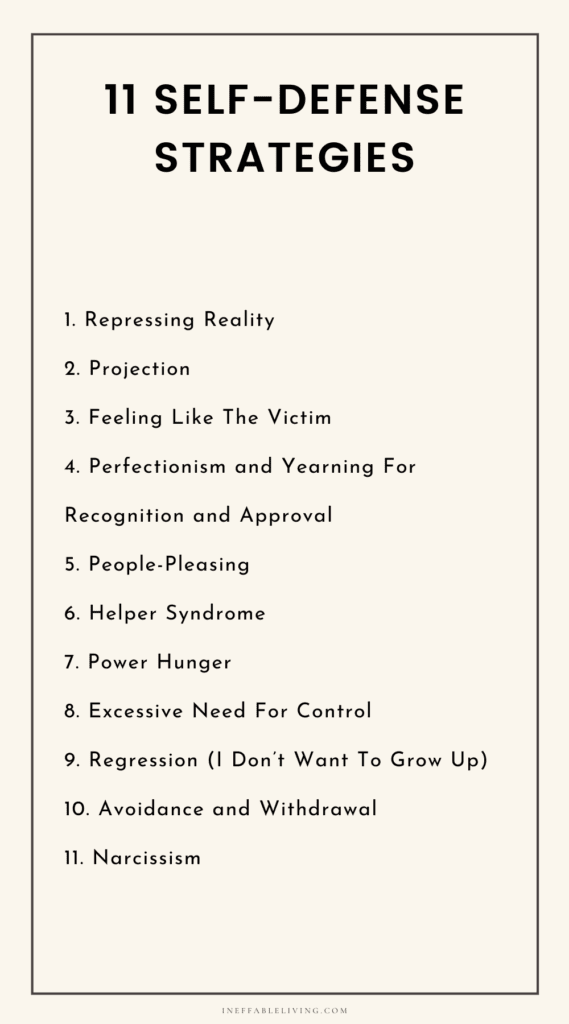
Healing Inner Teenager: How to Stop Self-Sabotage?
One of the main concerns most people face in life is making mistakes or wrong decisions.
We do everything we can to be right about things, and when we make mistakes, we struggle to forgive ourselves.
For some people, making a mistake makes them see themselves as a mistake. They believe they’re inadequate and need to be different, somehow. These beliefs are the wounded child’s beliefs.
As you heal your inner child, your inner teenager will be healed and tamed as well
Inner Teenager Healing Worksheets PDF
14 Exercises For Inner Teenager Healing
The following exercises will help you understand and heal your inner teenager:
#1. Find Inner Supporters
Begin by finding your own inner supporters on your healing journey.
It might be a single person, or a group of people. They might be supportive people living with you or people who passed away.
They might even be imaginary characters, such as a fairy godmother or a superhero.
You might use different supporters, depending on the situation.
Imagine these supporters accompanying you and offering support and encouragement.
#2. Find Your Inner Child: Uncover Your Wounded Child’s Beliefs
1. Think of a least one experience from your childhood with one of your parents where you felt hurt or neglected.
2. Brainstorm keywords based on this experience. How did your parents treat you?
The following are some examples:
Mean, cold, indifferent, domineering, overprotective, very strict, inconsistent, unpredictable, self-centered, moody, pretentious, arrogant, not very empathetic, loud, aggressive, sadistic.
3. Consider some of the things your parents would usually say, like “It’s your fault I’m so overwhelmed,” or, “Just wait till Dad gets home,” or, “Why can’t you be like your cousin Jack,” or, You’ll never amount to anything.”
4. Consider the relationship your parents had and what the more difficult aspects of their relationship were, like “They fought a lot,” or, “Mom was weak, and Dad made every major decision by himself.”
5. Once finished, try to establish contact with your wounded child by examining what negative beliefs your parents’ behaviors stir up in you.
A parent who acts overwhelmed may give the child the feeling that they’re a burden.
To uncover your negative beliefs you can use the following formula:
- “I am______” or “I’m not ______,”
- “I can ______” or “I can’t ______,”
- “I’m allowed to ______” or “I’m not allowed to ______.”
What follows are some examples of beliefs:
- I’m worthless
- I’m not important
- I’m unwanted
- I’m unlovable
- I’m inadequate
- I’m always to blame
- I’m powerless
- I’m so small
- I’m so dumb
- I can’t do anything
- I’m not allowed to feel
- I’m a burden
- I’m inferior
- I need to look after you
- I’m not allowed to defend myself
- I have to do everything right
- I can’t show any weakness
Related: Best 10 Proven Ways to Heal From Childhood Trauma Splitting
#3. Accept the Inner Teenager and The Wounded Inner Child
There is a psychological law that states that the more we fight against ourselves, the more suffering we experience.
But self-acceptance doesn’t mean you have to like everything about yourself.
Self-acceptance means acknowledging what’s there—the good and the bad, the strengths and the limitations.
It’s only when you acknowledge these limitations that you can work on them if you choose to do so.
Try This
Close your eyes and try to recite your negative beliefs or it may be easier to recall an incident where your inner teenager was very reactive.
Feel what you’re feeling (fear, rage, insecurity, or sorrow.)
Take a deep breath and say to yourself “Yes, that’s my dear wounded inner child. You’re allowed to be here, just as you are. I welcome you.”
The more your wounded inner child feels seen, accepted, and understood, the quieter the inner teenager will become.
#4. Strengthen Your Adult-Self
To tame your inner teenager and heal your wounded inner child, you’ll need a strong, resilient inner adult who understands that the negative beliefs are simply the result of childhood influences and who can challenge these negative beliefs.
Here is a list of arguments or facts that you can use along the way:
- No child is born bad. Children can be exhausting, but this doesn’t affect their value. It is the parents’ responsibility to consider whether they want to take on the stress of parenthood before deciding to become parents.
- Children are more or less powerless. If parents are overwhelmed by the task of fulfilling their children’s needs, they should seek assistance.
- Children have the right to have their emotional and physical needs met and it is the parents’ duty to understand their children’s needs and fulfill them.
- It is the parents’ responsibility to love their children and make them feel welcome and accepted. Children should not feel they have to behave in a certain way to earn that love and acceptance.
As you examine your negative beliefs, try to create a distance between the belief and yourself:
Instead of saying, “I’m afraid of being rejected,” say to yourself, “The wounded child within me is afraid of being rejected.” Notice the thought without labeling it as right or wrong, good or bad.
This will prevent you from giving yourself a false identity and convincing yourself that your thoughts or beliefs are facts.
Related: How to Overcome Effects of Emotional Abuse? (and Heal Them)
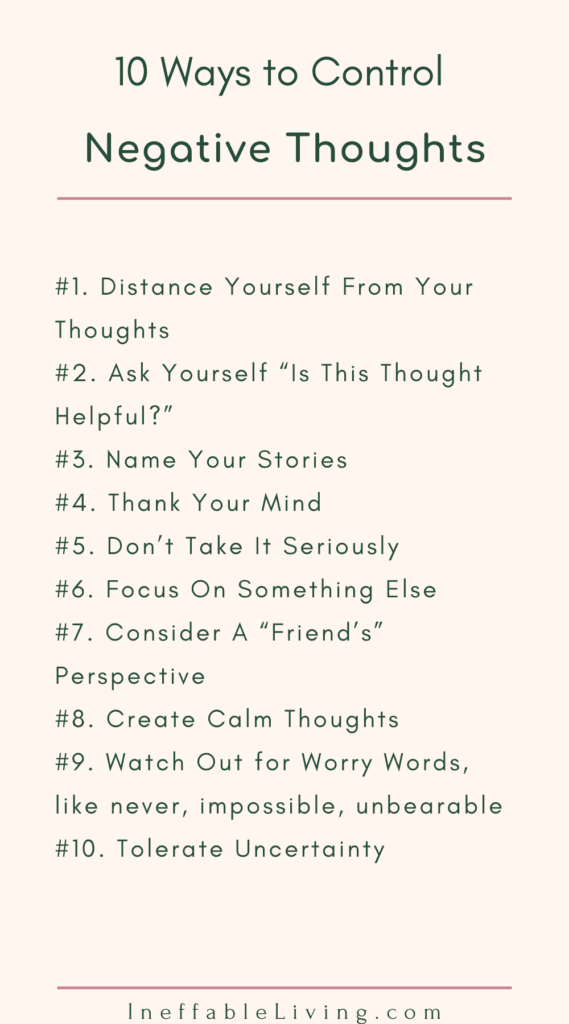
#5. Recognize When Your Inner Teenager Is Reacting
This, in turn, will help you identify your inner child’s needs.
When does the inner teenager come out?
What types of self-sabotaging behaviors do you find yourself engaged in?
What is the inner teenager protecting me from feeling?
Answering those questions will help you identify when the inner teenager is in control and what wounds are triggered.
The messages your inner teenager gives you are valuable and worth listening to.
#6. Show Compassion to The Inner Teenager
Inner Teenager Healing Prompts
- In what ways did you not feel supported or safe as a teenager?
- What self-defense behaviors did you engage in to cope with these feelings?
- How is the inner teenager showing up in your life right now as an adult?
How to talk to your inner teenager?
The inner teenager is typically immature, rebellious, and moody.
This can make it challenging to access your inner teenager and to refrain from becoming critical and impatient.
Take time to appreciate how the inner teenager is trying to protect the inner child. Validate the inner teenager’s experience and show him understanding and compassion
Reassure the inner teenager that you are in control now and correct the mistaken conclusions behind the inner teenager’s self-sabotaging behaviors.
Explain to the inner teenager that defense mechanisms, such as avoidance won’t make the problem go away and that unlike what the inner teenager believes, as an adult, you are capable of facing whatever comes your way.
#7. Understand Your Wounded Inner Child’s Perspective
Understanding your wounded inner child’s perspective will help you separate your inner adult from the wounded inner child’s perception, allowing you more freedom in your decisions and actions.
1. Choose a problem you’re struggling with. Place two chairs facing each other. Sit down on one chair and try to channel your wounded inner child. Allow it to describe the problem and express its feelings and thoughts about this problem.
2. Then sit down on the other chair to summon your inner adult and try to analyze the problem using your own critical, rational mind.
If you have a problem saying no to someone, you may discover that the inner teenager is not trying to be polite but it’s the wounded inner child’s fear of rejection that’s preventing you from asserting yourself.
You can do this exercise in writing, using different pens for the wounded inner child and the inner adult.
Related: Top 25 Inner Child Journal Prompts To Heal Your Inner Wounds
#8. Nurture Your Inner Child
To change your negative beliefs, you need to help your wounded inner child understand that these beliefs are the result of flawed programming.
To do this, your inner adult will need to adopt a very sympathetic, parental attitude. It might help to look at your childhood pictures of yourself or imagine you are speaking to a scared little kid. Imagine how you’d comfort him.
1. Explain to the wounded inner child how things were back then at home, using details from your own childhood. For example, you might say “Mom was always stressed. You tried not to be a burden on her. You thought ‘I am not good enough,’ ‘I am a burden.” But you could never, nor was it your responsibility to make Mom happy.”
Addressing your wounded inner child, try using a child’s vocabulary, as if you’re talking to a real child. Words like “depressed” could be replaced with words like “sad,” or, “upset.”
2. Explain to the wounded inner child that none of this was its fault and things would have been so different had Mom and Dad not been so overwhelmed. You can say something like “Mom and Dad had made mistakes and had they not been so stressed, you have realized that you’re enough and loved just the way you are. It is okay if you were a burden sometimes – it’s the way children are. It’s the parents’ responsibility to take care of their children’s needs.”
Related: Undermothered: How to Mother Yourself Using These Practical 10 Strategies?

#9. Allow The Inner Adult To Take Control
It is important to stop allowing the inner teenager to take control of your actions and let the inner adult take charge.
When a child is afraid to go to the doctor, the adult won’t let the child cancel the appointment and will instead hold their hand and help them through the visit.
You can approach your wounded inner child in the same way: allow it to express itself, but ultimately, you’re the one making the rational decisions.
Try This
When you catch yourself governed by your wounded inner child, believing everything you think and feel, try to switch back to your adult self and work on comforting the wounded inner child with soothing words and touch.
Return to your current reality, in which you are an independent adult dealing with people who are not your mom and dad.
The more you practice being attentive to yourself, the faster you’ll become at catching yourself when you retreat to your inner teenager.
#10. Amplify The Positive, Bonding Moments
In the same way that you can reduce painful memories, you can also use your imagination to amplify the positive, bonding ones.
Recall memories from your childhood that were really nice, close, and loving – moments you experienced with your parents.
Allow yourself to feel that sense of connection and security.
If you can’t think of positive moments you’ve shared with your parents, you can pick out imaginary parents.
Imagine the parents you wished you had, whether they are real people or imaginary figures. Close your eyes and visualize the child you were back then being cared for and loved.
Allow yourself to feel the happiness and security with your new parents.
#11. Discover Your Positive Beliefs
Try to think of positive beliefs you adopted from your parents.
Write down positive traits they had and things they did right.
If you’d rather not include your parents because your relationship with them is or was difficult, you may skip this part of the exercise.
You can also think of other adults in your life: a loving grandma, a kind teacher, or a neighbor who showed you understanding and support as a child.
Here’s a list of some positive beliefs:
- I am welcome
- I’m allowed to be me
- I am loved
- I am valuable
- I have a right to be happy
- I’m allowed to feel
- I’m allowed to defend myself
- I’m allowed to have my own opinions
- I’m allowed to make mistakes
- I’m allowed to be a burden sometimes
- I’m allowed to set boundaries
Once you identified a set of positive beliefs, go back to your list of negative beliefs and try to turn these into positives.
For example, the belief that “I’m a burden,” can become, “I’m allowed to be a burden sometimes.” The belief that “I’m worthless,” becomes, “I’m valuable.”
Make sure you don’t include a negative like “not,” in your positive beliefs.
This is mainly because our subconscious isn’t able to tell the difference between “I’m worthless,” and “I’m not worthless,” for example. It is hard not to think of something. When I say to you, “Please don’t think of a pink elephant,” you’ll automatically start thinking of one.
Also, make sure your positive beliefs are formulated in a reasonable way by adding words like “enough” or narrowing the belief down:
A belief like “I’m ugly,” is better turned into, “I’m attractive enough,” or, “I’m good enough.”
A belief like “I’m not important,” is better turned into, “I’m important to my partner/children.”
Negative Core Beliefs List
#12. Rewrite Old Memories
Our early childhood memories can deeply affect our lives. All it takes is a small trigger to quickly and repeatedly fall back on old patterns.
The good news is that our mind does not differentiate clearly between reality and imagination.
For instance, imagining a fearful situation, such as an upcoming interview can be as anxiety-provoking as going for the real interview.
You can use imagination to rewrite painful memories.
Try This
1. Think of an incident from your childhood that reflects the beliefs of your wounded inner child. Try to remember an incident that doesn’t trigger debilitating feelings, or try not to immerse yourself fully in it.
For example, if your father abused you physically, it’s enough to imagine them raising their hand, without replaying the entire scene.
2. Try to experience the memory through the eyes of the child you were at the time, rather than viewing it from the outside. Feel what the child you were felt, but don’t fully immerse yourself in the feelings.
Use an anchor to help you stay present, such as your breath, or simply leave your eyes open and focus on an object in front of you while you recall the memory.
3. Imagine being rescued from that scene. Imagine a helper who shows up to intervene in the situation. It can be a real person or a fictional character.
#13. Write Your Wounded Inner Child a Letter
Imagine the child you were back then, standing in front of you, and think about all the loving things you wish to tell him or her.
You might find it helpful to look at a childhood picture of yourself.
#14. Achieve Your Goals
Using your journal, write a note to your Self.
1. Start by identifying what you want and need in your life to feel better about yourself. This might be a goal you have been trying to reach or a need you’re trying to fulfill.
E.g. Making more money.
2. Next, list the things the inner teenager does that interfere with you achieving your goal.
E.g. My inner teenager interferes by:
- Procrastinating
- Overspending
- Coming home and watching TV instead of researching jobs and opportunities online
- Avoiding making phone calls to promote myself and network
3. List productive behaviors that would help you reach this goal, even if they seem to you unrealistic right now.
E.g. Things that would help me reach my goals:
- Read more about how other people make money.
- Take a small step every day toward finding a better job or venture.
- Pursue a degree or training if needed.
Use Visualization
Visualizing yourself making changes helps stimulate brain cells known as mirror neurons.
These neurons allow your brain to take a trial run that will strengthen the neural connections involved in the action you plan to take, increasing your skillset and likelihood of reaching your goal.
Related: Best Edith Eger Quotes (“The Gift”): 12 Invaluable Lessons to Set Yourself Free
What Does A Secure Inner Teenager Look Like?
When the inner teenager becomes healthy and secure, his energy can manifest in beneficial ways:
- Becomes a force for justice
- Easily detects power-over and manipulation
- Becomes authentic
- Finds belonging and interconnectedness in a way that honors everyone’s rights and boundaries equally
- Exudes originality and innovation
- Becomes a force that acts on one’s intuition
- Enjoys life and brings spontaneity and fun
Pro Tip. Work With a Therapist
There is a lot that you can do to support your healing journey.
But healing your inner child and inner teenager alone can be an overwhelming thing to do on your own, especially when the emotional turmoil has been repressed for a long time.
Consider working with a therapist to support you on your healing journey.
To find a mental health care provider near you, call 1-800-662-HELP (4357) or you can use online therapy.
Online therapy is much affordable than in-person therapy, but can be equally effective. (source)
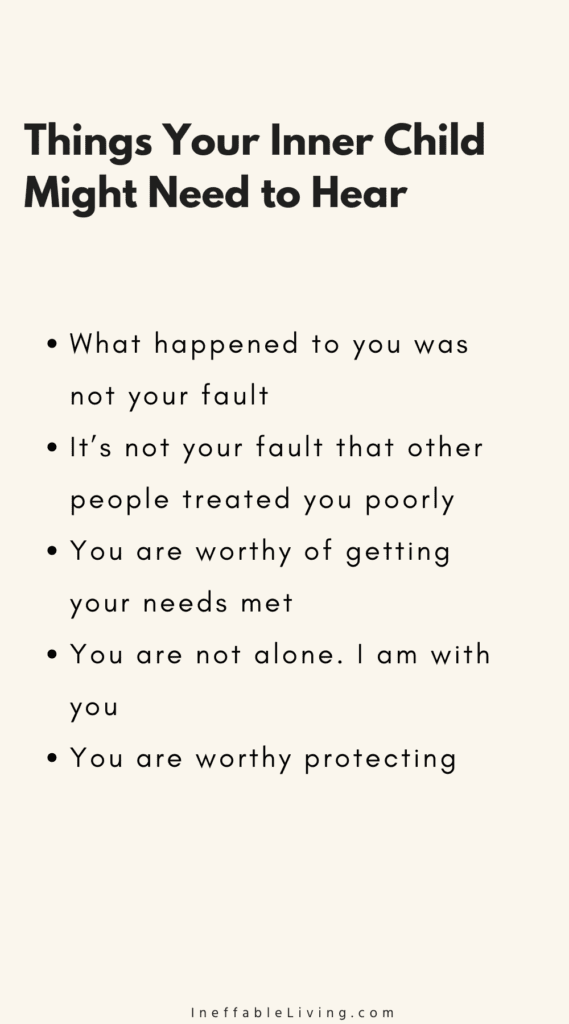
FAQ
How Does The Inner Child develop?
Generally speaking, fundamental beliefs, such as whether or not we are welcomed, loved, accepted, valuable, etc. develop in the first two years of life.
Children absorb these beliefs through the caresses, loving looks, and vocal register of their parents or caretakers.
It’s also during this time that basic trust—or basic mistrust—develops.
People who developed basic trust frequently channel that trust when meeting other people. Whereas, people who never developed basic trust feel deeply insecure and generally meet other people with suspicion.
Why Do Negative Experiences Stick More Than Positive Ones?
A few negative experiences can be all it takes to leave deep impressions on our minds. But the same can’t be said for positive experiences.
That’s because, genetically, we are programmed to pay more attention to bad experiences than to good ones and keep those bad experiences much longer.
The reason why is because watching out for threats is more important to our survival. Mistakes can be deadly. That’s why our minds are programmed to register mistakes.
This, unfortunately, means that all too often, we may revisit a humiliating situation years later and feel as embarrassed as if it had happened yesterday.
So next time you’re angry at someone or feeling upset because one bad thing happened that day, take a moment to carefully consider all of the wonderful things you’ve experienced with that person and the dozen other good things that happened to you that day.
Inner Child Healing Exercises PDF
References
- Portions of this article were adapted from the book The Child in You, © 2015 by Stefanie Stahl. All rights reserved.
- Portions of this article were adapted from the book Taming Your Outer Child: A Revolutionary Program to Overcome Self-Defeating Patterns, © 2011 by Susan Anderson. All rights reserved.
